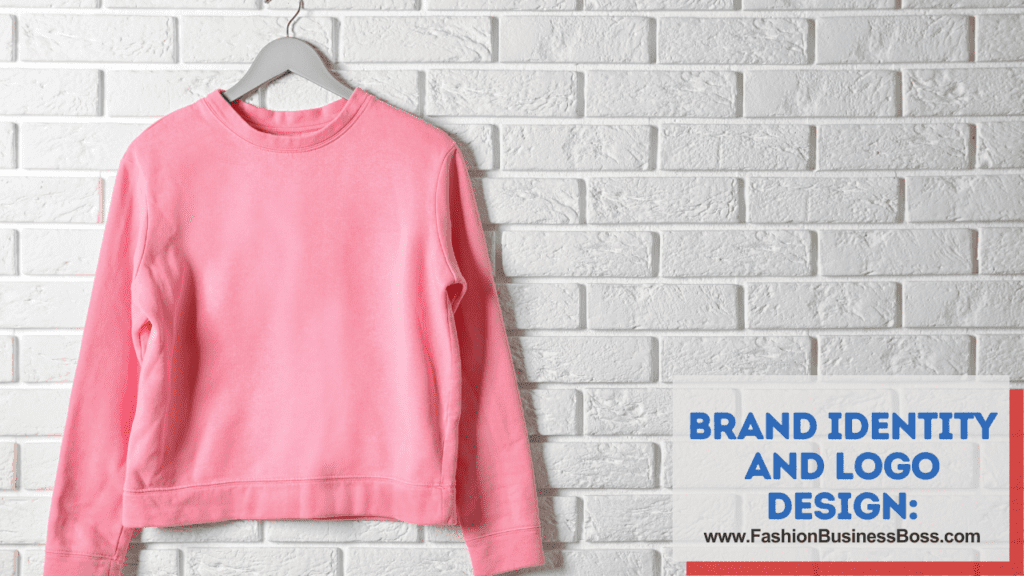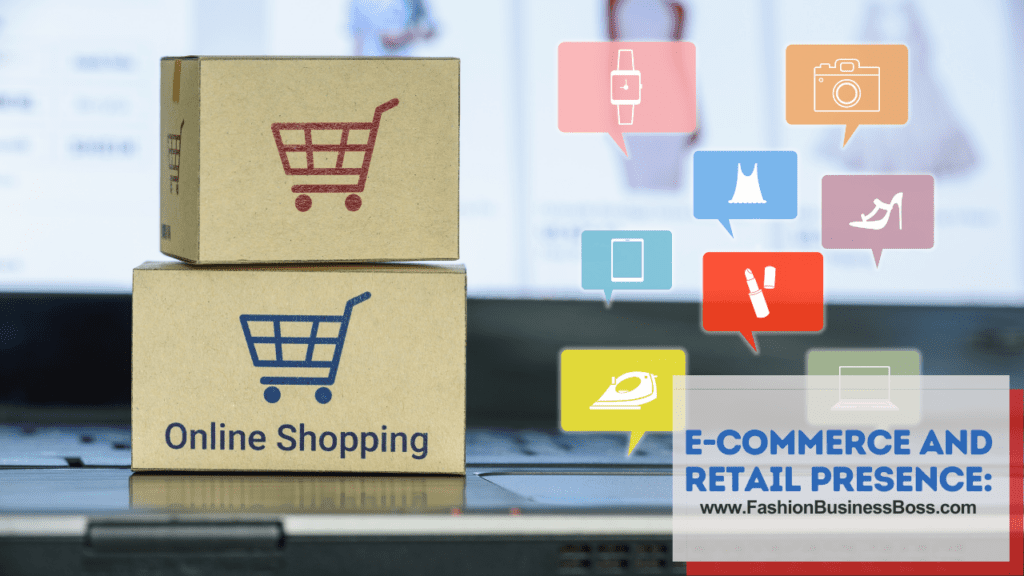Starting a clothing company is a dream for many aspiring entrepreneurs who are passionate about fashion and design. The fashion industry offers an exciting and dynamic environment, but it also demands careful planning, creativity, and dedication.
To start a clothing company, conduct market research to find a unique niche. Develop a strong brand identity, create appealing designs, and partner with reliable manufacturers. Embrace e-commerce and effective marketing strategies to thrive in the competitive fashion industry. Adapt to customer feedback and stay dedicated to your vision.
1. Market Research and Niche Identification:
Before venturing into the captivating world of fashion, conducting comprehensive market research is paramount. This process involves delving deep into industry dynamics to unearth potential gaps and lucrative opportunities. By studying prevailing trends, understanding customer preferences, and analyzing competitors, you gain invaluable insights into the market landscape.
A key objective of market research is to identify a unique selling proposition (USP) that sets your clothing line apart from the rest. Whether it revolves around sustainable fashion, gender-inclusive designs, affordable luxury, or any other innovative concept, defining a niche grants your clothing company a distinctive identity and a specific target audience to cater to.
The information garnered from thorough market research will be instrumental in shaping your brand’s direction and product offerings. It helps you align your creations with the demands and desires of your intended consumers, positioning your brand in a way that resonates with your audience.
By recognizing the unmet needs and untapped potentials in the market, you can strategize and innovate effectively, positioning your clothing company for success in a fiercely competitive industry.
2. Business Plan Development:
Crafting a well-structured business plan lays the cornerstone for the triumph of your clothing company. A business plan serves as a comprehensive roadmap, outlining every aspect of your venture. It begins with defining your company’s mission, vision, and core objectives, providing a guiding purpose to your efforts.
The business plan then delves into crucial aspects such as identifying your target market and understanding their preferences. Pinpointing the right audience enables you to tailor your designs and marketing strategies to their tastes, increasing the chances of success.
A well-thought-out pricing strategy ensures that your products are competitively positioned while also accounting for your production costs and profit margins. Simultaneously, a detailed marketing plan allows you to promote your clothing line effectively, reaching the right customers through various channels.
Incorporate information about your manufacturing process, including partnerships with suppliers and vendors. Sourcing materials ethically and sustainably, if aligned with your brand values, can set you apart in a conscious consumer market.
Financial projections provide a glimpse of your expected revenues, expenses, and profitability. They help you gauge the financial viability of your business and secure funding if necessary.
With a comprehensive business plan in hand, you equip yourself with the knowledge and foresight to navigate challenges and capitalize on opportunities that arise as you embark on the journey of bringing your clothing company to life.
3. Brand Identity and Logo Design:

Establishing a compelling brand identity is paramount in carving a distinct position for your clothing company within the competitive fashion landscape. Your brand’s identity encompasses various elements, starting with a memorable brand name that encapsulates your niche and resonates with your target audience. A well-chosen name not only communicates your brand’s essence but also aids in brand recall and recognition.
Central to your brand identity is the creation of a visually captivating and unforgettable logo. Your logo serves as the face of your clothing company, the symbol that embodies your values and style. Investing time and effort in the logo design process is crucial, as it will be prominently featured on your products, marketing materials, and online presence.
A well-designed logo should be versatile, scalable, and representative of your brand’s uniqueness. Consider the use of colors, typography, and visual elements that evoke the right emotions and perceptions you wish to convey to your customers. Striking the right balance between simplicity and creativity ensures your logo remains timeless and easily recognizable.
Overall, a strong brand identity and a well-designed logo build credibility, evoke trust, and make a lasting impression on your target audience, forming the foundation for a successful and memorable clothing company.
Read more about Launching a Clothing Brand: Fashioning Your Brand Identity
4. Product Design and Development:
Product design lies at the core of your clothing company’s success. Developing a captivating collection of designs that align with your brand’s identity is essential to capture the attention of your target customers. Start by understanding their preferences and needs through market research and customer feedback.
Consider various factors while designing your products, such as fabric selection. Opt for materials that align with your brand’s values and resonate with your target audience, whether it’s sustainable, premium, or performance-based textiles.
Color palettes play a vital role in evoking emotions and conveying your brand’s aesthetic. Choose colors that complement your brand identity and appeal to your specific customer base.
Sizing options are equally crucial to cater to a diverse range of body types and ensure inclusivity. Ensure that your clothing line offers sizes that accommodate various measurements.
Collaborating with skilled designers or employing your creative talents will ensure originality and uniqueness in your designs. Strive to create pieces that stand out and offer a fresh perspective in the fashion industry.
Once your designs are ready, it’s essential to create prototypes to assess the quality, fit, and overall appeal. Gathering feedback from focus groups or potential customers can help refine your products before launching them to the market.
By prioritizing product design and development, you set the stage for a successful clothing company that delivers on style, quality, and customer satisfaction.
5. Manufacturing and Sourcing:
Choosing the right manufacturing partner is a critical step in ensuring the success of your clothing company. Thorough research is essential to find reliable manufacturers who share your commitment to producing high-quality products. Look for manufacturers with a proven track record in the fashion industry, and seek recommendations from trusted sources.
Collaborating with ethical manufacturers is crucial, as consumers increasingly value transparency and sustainable practices. Verify that your manufacturing partner adheres to ethical labor practices, ensuring fair wages and safe working conditions for their employees.
Request samples from potential manufacturers to assess the quality of their work and their ability to bring your designs to life. This step allows you to evaluate the craftsmanship, fit, and material quality, helping you make an informed decision.
Incorporate sustainability into your sourcing process by exploring eco-friendly materials. Sustainable fashion is gaining momentum, and using environmentally friendly materials can appeal to conscious consumers. Look for options like organic cotton, recycled fabrics, or innovative sustainable textiles that align with your brand’s values.
Remember that maintaining open and clear communication with your manufacturing partner is vital to ensure a smooth production process. Building a strong working relationship fosters collaboration and allows you to address any issues that may arise during production.
6. Legal and Regulatory Requirements:
As you embark on your clothing company journey, it’s essential to navigate the legal and regulatory aspects of starting a business. Register your clothing company with the appropriate authorities to establish it as a legal entity. This process involves choosing a business structure, such as sole proprietorship, partnership, or limited liability company (LLC).
Securing the necessary licenses and permits is crucial to operate your clothing company legally. Research local, state, and federal requirements to ensure compliance with regulations related to clothing retail, sales tax, and more.
Trademarking your brand name and logo safeguards your intellectual property rights and prevents others from using similar designs that may cause confusion among consumers. Consult with a trademark attorney to guide you through the process and ensure your brand’s protection.
When designing and manufacturing clothing, be aware of labeling and safety standards set forth by regulatory bodies. Accurate labeling ensures that your products meet safety requirements and provide consumers with essential information about the garments they purchase.
By fulfilling these legal and regulatory obligations, you create a strong foundation for your clothing company, minimizing legal risks and ensuring smooth operations in the long run.
7. Branding and Marketing Strategy:
Crafting a robust branding and marketing strategy is vital for establishing your clothing company’s presence in the competitive fashion landscape. Start by defining your brand’s identity, values, and unique selling points. Use this foundation to create a compelling brand story that resonates with your target audience.
Social media platforms offer powerful tools to promote your clothing line and engage with potential customers. Leverage platforms like Instagram, Facebook, and Pinterest to showcase your designs, share behind-the-scenes content, and interact with your followers. Collaborate with fashion influencers and bloggers to extend your reach and gain credibility within your niche.
Engage in storytelling to connect emotionally with your audience. Share the inspiration behind your collections, the craftsmanship involved, and the positive impact of your sustainable practices. Storytelling creates an authentic connection and fosters brand loyalty among your customers.
To create buzz and excitement around your brand, consider organizing launch events or pop-up shops. These experiences offer a tangible way for customers to interact with your products and immerse themselves in your brand’s world. Memorable brand experiences leave a lasting impression and encourage word-of-mouth marketing.
Regularly analyze the performance of your branding and marketing efforts through metrics and analytics. Adapt your strategies based on customer feedback and insights to continuously improve and stay relevant in the ever-changing fashion landscape.
8. E-commerce and Retail Presence:

In the digital era, establishing an e-commerce presence is vital for the success of your clothing company. A well-designed and user-friendly e-commerce website serves as your virtual storefront, showcasing your collections to a global audience. Ensure that your website is visually appealing, mobile-responsive, and easy to navigate.
Implement secure payment gateways and prioritize customer data protection to build trust and credibility. Offer multiple payment options and a seamless checkout process to enhance the customer shopping experience.
Provide exceptional customer service to foster loyalty and repeat business. Promptly respond to inquiries, address concerns, and consider implementing a hassle-free return policy. Positive customer experiences can lead to valuable word-of-mouth referrals.
While e-commerce is essential, don’t underestimate the value of physical retail presence. Explore partnerships with retail stores or boutiques that align with your brand’s values and target audience. Having your products available in brick-and-mortar locations can increase brand visibility and provide a tactile shopping experience.
Maintain a consistent and cohesive brand image across all channels, whether online or in-store, to strengthen your brand’s recognition and recall. As your clothing company grows, regularly reassess and optimize your e-commerce and retail strategies to stay ahead of the competition and meet customer expectations.
Read more about How to Join the E-commerce Revolution: Launching a Clothing Store
9. Production and Quality Control:
As your clothing company gains traction and your customer base expands, upholding consistent product quality becomes imperative. Establishing stringent quality control measures is crucial to ensure that each garment aligns with your brand’s high standards. Implement thorough quality checks at different stages of production to identify and rectify any potential issues.
Regular inspections during the manufacturing process help catch defects or inconsistencies early on, minimizing wastage and costly reworks. Collaborate closely with your manufacturing partners, providing clear guidelines and specifications for each product.
Incorporate customer feedback as a valuable tool to improve your quality control processes. Address any complaints or concerns promptly and work towards enhancing the overall product experience. Actively engage with customers to gather feedback on fit, fabric comfort, and design appeal.
Establishing a transparent feedback loop with your customers builds trust and loyalty. Utilize customer reviews and ratings to identify areas for improvement and capitalize on strengths. Continuous improvement in product quality ensures your clothing company remains competitive and retains customer satisfaction.
10. Customer Feedback and Adaptation:
Customer feedback is an invaluable asset in the ever-changing landscape of the fashion industry. Encourage customers to leave reviews and comments on your website, social media, or review platforms. Active engagement with your customers demonstrates your commitment to meeting their needs and preferences.
Leverage customer feedback to enhance your designs and product offerings. Analyze common themes in feedback to identify trends and demands, which can inform your next collection. Adapt your designs and styles to align with customer preferences, staying ahead of market trends.
Pay close attention to customer service feedback. Timely and personalized customer service can significantly impact customer satisfaction and retention. Address customer queries and concerns promptly, showcasing your dedication to exceptional service.
Stay agile and flexible in response to evolving market trends and customer expectations. The fashion industry is dynamic, and being receptive to change enables you to seize new opportunities and stay relevant in the eyes of your audience.
By actively embracing customer feedback and utilizing it as a compass for adaptation, your clothing company can foster a loyal customer base and establish itself as a brand that prioritizes customer satisfaction and continuous improvement.
Conclusion
Starting a clothing company requires a mix of creativity, business acumen, and perseverance. By conducting thorough research, developing a strong brand identity, producing high-quality products, and implementing effective marketing strategies, you can build a successful and thriving fashion brand. Stay true to your vision, adapt to changing market dynamics, and always put your customers at the forefront. With dedication and passion, your clothing company can make its mark in the competitive world of fashion.
Frequently Asked Questions

1. What role does customer feedback play in a clothing company?
Customer feedback is invaluable for growth and adaptation, helping you improve products and services.
2. Can I integrate sustainability into my clothing company?
Yes, consider sourcing eco-friendly materials and adopting sustainable practices to attract conscious consumers.
3. What qualities do I need as a clothing company entrepreneur?
Perseverance, creativity, business acumen, and a passion for fashion are essential to succeed in this industry.
To learn more about starting your own clothing business, check out my startup documents here.
Please note that the contents of this blog are for informational and entertainment purposes only and should not be construed as legal advice. Any action taken based on the information provided in this blog is solely at your own risk. Additionally, all images used in this blog are generated under the CC0 license of Creative Commons, which means they are free to use for any purpose without attribution.

Meet Shawn Chun: Entrepreneur and Fashion Business Fan.
I’m a happy individual who happens to be an entrepreneur. I have owned several types of businesses in my life from a coffee shop to an import and export business to an online review business plus a few more and now I create online resources for those interested in starting new ventures. It’s demanding work but I love it. I do it for those passionate about their business and their goals. That’s why when I meet a designer or boutique owner at a craft fair, farmers market, retail location or anywhere else I see myself. I know how hard the struggle is to retain clients, find good employees and keep the business growing all while trying to stay competitive.
That’s why I created Fashion Business Boss: I want to help fashion business owners like you build a thriving business that brings you endless joy and supports your ideal lifestyle.

